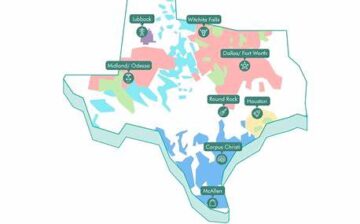Moving into a new rental can be an exciting yet intimidating process. Whether you’re a first-time renter or a seasoned tenant, the process of moving in requires careful planning and organization to ensure a smooth transition into your new home. From understanding your lease agreement to preparing for the move itself, there are several key steps to consider when moving into a rental property. This comprehensive guide aims to provide renters with essential tips and advice to make the moving-in process as seamless and stress-free as possible.

Understanding Your Lease Agreement
Before moving into a rental property, it’s crucial to thoroughly review and understand your lease agreement. Your lease outlines the terms and conditions of your tenancy, including important details such as the duration of the lease, rent amount, security deposit, and any rules or regulations set by the landlord or property management company. Take the time to carefully read through the entire lease agreement and clarify any questions or concerns with your landlord or property manager before signing.
Inspecting the Property
Before moving in your belongings, conduct a thorough inspection of the rental property to identify any existing damages or issues. Document any noticeable damage, such as scratches on the floors, stains on the carpet, or chipped paint on the walls, by taking photos or videos. This documentation will serve as evidence of the property’s condition at the time of move-in and can help protect your security deposit when you eventually move out. Additionally, be mindful of premises liability by ensuring that walkways are clear of hazards and taking necessary precautions to prevent accidents, such as installing proper lighting and securing rugs or carpets to prevent tripping hazards. Make sure to communicate any concerns or discrepancies with your landlord or property manager and request necessary repairs or maintenance before moving in.
Setting Up Utilities and Services
One of the essential tasks when moving into a new rental property is setting up utilities and services in your name. Contact local utility providers, such as electricity, water, gas, and internet/cable, to schedule service activation or transfer. Make sure to coordinate the timing of utility activation to ensure that essential services are available when you move in. Additionally, consider arranging for other services such as trash collection, recycling, and lawn care if applicable to your rental property.
Organizing Your Move
Proper organization is key to a smooth move-in process. Create a checklist that outlines all of the things you need to complete in all stages of the moving process. This checklist may include packing belongings, hiring movers, moving insurance or renting a moving truck, notifying relevant parties of your change of address, and arranging for storage if needed. Begin packing well in advance of your move-in date, labeling boxes with their contents and the room they belong to for easy unpacking later on. Consider decluttering and donating items you no longer need or use to streamline the moving process.
Securing Renter’s Insurance
Renter’s insurance is a valuable investment that provides financial protection for your personal belongings and liability coverage in case of accidents or damages within your rental property. While landlord insurance typically covers the physical structure of the property, it does not protect tenants’ personal possessions. Renter’s insurance policies are relatively affordable and can offer peace of mind knowing that your belongings are safeguarded against theft, fire, or other unforeseen events. Contact insurance providers to compare quotes and select a policy that best suits your needs.
Finalizing Move-In Details
As your move-in date approaches, finalize any remaining details to ensure a smooth transition into your new rental property. Confirm the date and time of key collection with your landlord or property manager and arrange for any necessary access codes or keys. Prepare a list of emergency contacts, including your landlord or property manager’s contact information, in case of any urgent issues that may arise after moving in. Additionally, familiarize yourself with the property’s amenities, such as laundry facilities, parking arrangements, and community rules or regulations.
Moving into a rental property requires careful planning, organization, and attention to detail. By understanding your lease agreement, inspecting the property, setting up utilities and services, organizing your move, securing renter’s insurance, and finalizing move-in details, you can ensure a smooth and stress-free transition into your new home. With proper preparation and communication, you’ll be well-equipped to start this exciting new chapter in your life as a renter.
We hope you found this blog post A Renter’s Guide For Moving In, useful. Be sure to check out our post Renters Cleaning Checklist For Moving Out You Should Know for more great tips!
Have Experience in the Moving Industry? Want an Additional Income Stream? Work With All Around Moving!
We help you get started in this lucrative career. Click here to learn more.





